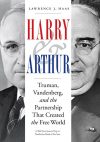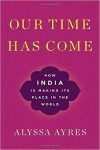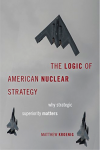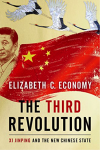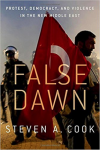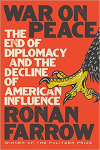
The United Nations designates April 30 as International Jazz Day in order to highlight jazz and its diplomatic role of uniting people in all corners of the globe. The U.S. has used jazz in diplomacy since the 1950s, when the U.S. Information Agency created the Jazz Ambassadors program to send leading American Jazz musicians such as Louis Armstrong, Dizzy Gillespie, Benny Goodman, and Duke Ellington to perform overseas. An exhibit commemorating this program, created by Meridian International Center, is now on view at the U.S. Diplomacy Center in Washington, DC.
A note from the president of American Diplomacy
American Diplomacy Journal is proud to introduce our new Editor, Beatrice Camp, and give our warmest thanks and best wishes to Csaba Chikes our previous Editor.
Csaba Chikes leaves us as Editor but remains on our Board and will continue to offer his valuable contributions to our work. Csaba has had the second longest tenure as Editor in our history—seven years since he took the position in the spring of 2011. We are especially happy that we will continue to enjoy Csaba’s marvelous insights and rapier wit as we deal with the challenges of modern diplomacy. Known for his charm and erudition, we his colleagues expect more of the same as we go forward. Csaba had an outstanding career as a Senior Foreign Service Officer with the U.S. Information Service (USIA),including assignment, in the aftermath of the dissolution of the Soviet Union, as the USIA counterpart to the State Department’s Principal Deputy Assistant Secretary for the Bureau of European Affairs. In this assignment he was responsible for oversight of the press and cultural activities of USIA posts throughout the former Soviet Union, Central and Southern Europe. Many, many thanks, Csaba, for giving generously in the past and now supporting us in the future.
Beatrice Camp retired from the U.S. Foreign Service after a distinguished career that included assignments as Consul General in Chiang Mai, Thailand and Shanghai, China, as Senior Advisor to the Smithsonian in Washington, D.C, and in the State Department Office of Inspector General. Bea was the first woman to head a U.S. Consulate General in China, ensured successful U.S. participation at World’s Fairs in Shanghai and Milan, and led press and cultural programs at posts in Asia and Europe. A journalist before entering the Foreign Service, she brings a discerning eye and a fine pen to the work of our Journal. We are fortunate to have her join our team and know that you will appreciate her commitment to excellence and keen editing skills in our succeeding issues. Welcome and congratulations Bea!
Commentary & Analysis
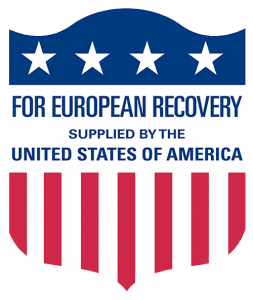 The Marshall Plan: Seventy Years Since the Start of a Great Diplomatic Effort by Thomas E. McNamara
The Marshall Plan: Seventy Years Since the Start of a Great Diplomatic Effort by Thomas E. McNamara
The Limits of Opposition—A Case Study of U.S. Reflagging Operations During the Iran-Iraq War by Christian Heller
The Surprising Allure of Russian Soft Power by Nicolai N. Petro
Riding Off into Sunset by William P. Kiehl
U.S.-China Relations and the Art of the Deal by Beatrice Camp
Interagency Cooperation and the Future of Intervention Policy by Frances Duffy
Diplomacy as Risk Management by Chas Freeman
Eyewitness: Foreign Service Stories
James and the Moscow Goons by Peter Bridges
Tell Me, Miss… by Elizabeth Krijgsman
From the National Archives
Cold War Humor, 1953
What Goes Up Must Come Down: Dealing With the International Aspects of the Demise of SKYLAB, Part I
“We Found Ourselves Living in the Midst of a Battlefield”: The Experiences of the U.S. Consulate General in Warsaw on the Outbreak of World War II September 1939
Foreign Service Accounts from the Oral History Archives (ADST.ORG)
In this issue, we offer two more ADST segments focusing on U.S. international development stories, one on the Marshall Plan and another from USAID officer Carol Peasley.
The Economic Cooperation Act, better known as the Marshall Plan, was signed into law on April 3, 1948, 70 years ago. The act resulted from close cooperation between the Democratic Truman Administration and the Republican-led Congress. Under the Marshall Plan, between 1948 and 1951, the United States provided $13.3 billion ($150 billion in 2017 dollars) in assistance to 16 European countries. Follow the accounts of U.S. diplomats Jacob J. Kaplan, Thomas Wilson, Herman Kleine, William Parks, John Gunther Dean, and Everett Bellows, who worked to carry it out. https://adst.org/2015/05/the-marshall-plan-the-europeans-did-the-job-themselves/
Carol A Peasley served with USAID from 1970-2005, with assignments in Nepal, Latin America, Thailand, Africa, and Russia. In her oral history, she recounts USAID’s work in Russia after the fall of the Soviet Union to build a market economy and new civil society, including with Vladimir Putin, Yegor Gaidar, and Mikhail Khodorkovsky. (p. 124-146). She observes that, after Vladimir Putin’s first inauguration in 2000, Ambassador James Collins said “no one knew how Russia’s political transition would turn out, but he was confident that Russia could never be closed down and isolated as it had been during the Soviet period. Russian people had already been exposed too much to the rest of the world; it could never be closed down again. I try to remember that when I look at the Russia of today.” For the full interview, see https://adst.org/wp-content/uploads/2013/12/Peasley-Carol-A.pdf
Links
AFSA | Preserving America’s Global Leadership by Barbara Stephenson
Science and Diplomacy | A Diplomat’s Perspective on Use of Science and Evidence in Implementing PEPFAR by Jimmy Kolker
Brookings | 4 Essential Elements of a U.S. Strategy on Syria by Michael E. O’Hanlon
Rand | Russian Social Media Influence, Understanding Russian Propaganda in Eastern Europe by Todd C. Helmus, Elizabeth Bodine-Baron, Andrew Radin, Madeline Magnuson, Joshua Mendelsohn, William Marcellino, Andriy Bega, Zev Winkelman
The Hill | Return of the TPP: Trump realizing trade deal aligns with goals on China by Earl Anthony Wayne
Handelsblatt | EU ambassadors band together against Silk Road by Dana Heide, Till Hoppe, Stephan Scheuer, Klaus Stratmann
National Security Archives | Department of State’s Dissent Channel Revealed
Featured Reviews
Harry & Arthur: Truman, Vandenberg, and the Partnership that Created the Free World by Lawrence J. Haas
Review by John M. Handley
The Doctor and the Saint: Caste, Race, and “The Annihilation of Caste” by Arundhati Roy
Review by Jon P. Dorschner
Diplomats Who Are Authors
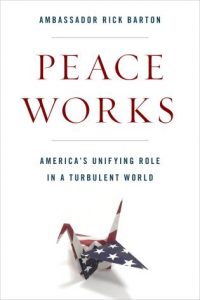 from Peace Works by Rick Barton
from Peace Works by Rick Barton
The doctor wanted to save lives, but not this way. Only in his mid-30s, the Syrian’s sensitive face bore the fatigue, sadness, and worries of war. He saw little reason for hope. Tears streamed down his cheeks as he spoke of his inability to take care of the children. “I cannot even find the simplest medicine. Illnesses that I could once treat within minutes are now a chronic problem.”

